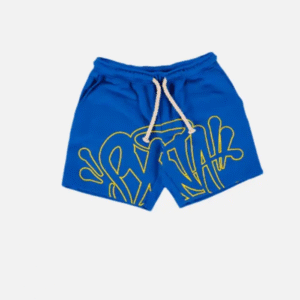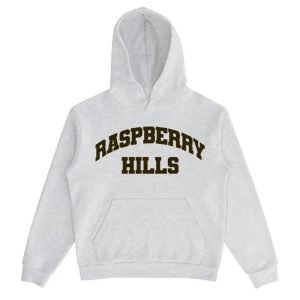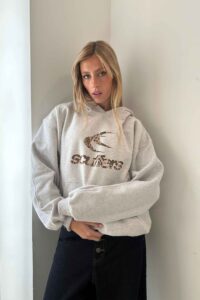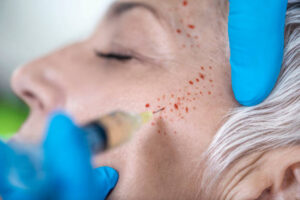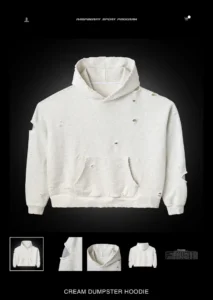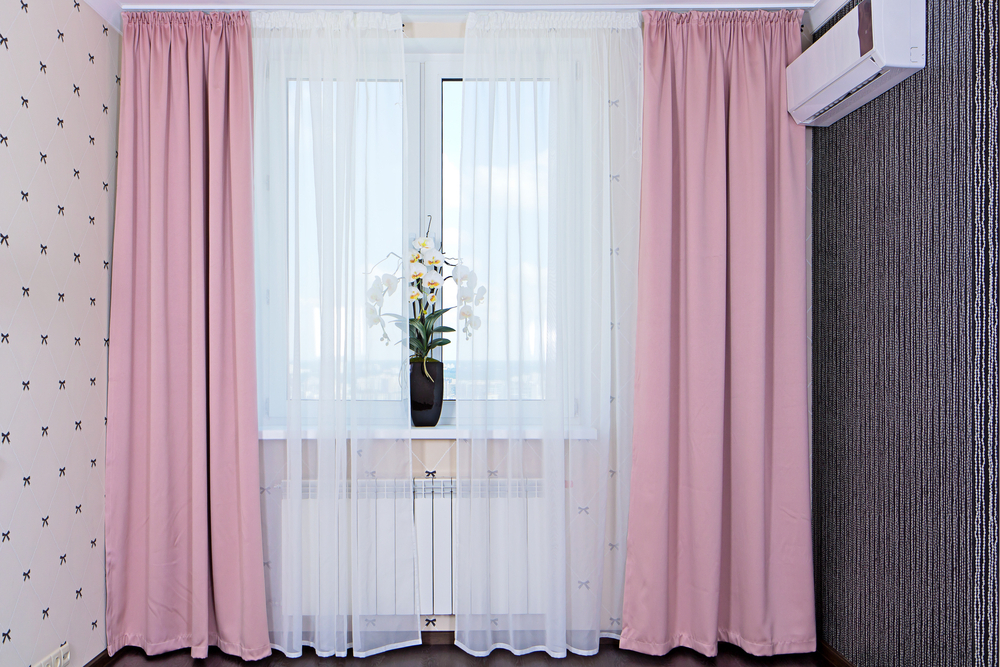
Curtain Cleaning Brooklyn
There I was, standing in my Williamsburg apartment, morning light streaming through the windows, illuminating what I’d been ignoring for months: my once-ivory drapes had taken on a grayish tinge, collecting the essence of Brooklyn in their fibers. It wasn’t just about aesthetics – these fabrics had become unwitting historians, documenting the neighborhood’s changing air quality in their very weave.
Brooklyn’s unique urban environment presents special challenges for home textiles. As someone who’s lived here for over a decade, I’ve watched my window treatments transform from design statements to environmental indicators. From the industrial edges of Greenpoint to the tree-lined streets of Park Slope, our borough’s diverse landscapes create equally diverse air quality conditions – and all of them eventually end up embedded in our drapes.
The Brooklyn Cocktail: What’s Actually in Our Air?
Brooklyn’s air is as complex and varied as its neighborhoods. Living near the BQE offers a different atmospheric experience than residing close to Prospect Park. But what exactly makes up this invisible mix that’s slowly transforming your curtains?
The truth is, Brooklyn’s air contains a fascinating (if somewhat concerning) mixture of elements:
Vehicle emissions dominate many neighborhoods, especially those near major thoroughfares like Atlantic Avenue or the Brooklyn-Queens Expressway. These emissions deposit a fine layer of particulate matter that’s particularly attracted to fabric surfaces.
Construction dust has become nearly ubiquitous as Brooklyn continues its perpetual redevelopment. Walk through Downtown Brooklyn or Bushwick, and you’ll encounter multiple construction sites, each contributing its share of concrete dust and debris to the local atmosphere.
My friend Sarah, who lives near a major construction project in Crown Heights, showed me her curtains after just three months of the nearby work beginning – the bottom six inches had developed a distinct discoloration that no amount of shaking would remove.
Industrial residue still wafts from the remaining manufacturing zones, particularly around Newtown Creek and parts of Sunset Park. These areas might contribute heavier particulates and sometimes chemical compounds that leave more than just dust on your drapes.
Salt air affects neighborhoods closer to the water, from Red Hook to Coney Island. While less visible, salt particles can deteriorate fabric over time and create a sticky surface that attracts other airborne elements.
Seasonal pollen from Brooklyn’s surprisingly robust urban tree canopy creates cyclical challenges, especially in greener neighborhoods like Windsor Terrace or Brooklyn Heights.
I remember moving from Manhattan to Brooklyn years ago, believing that my maintenance needs would decrease with distance from Midtown’s congestion. How wrong I was! The specific Brooklyn blend of air quality issues creates its own unique fabric care requirements.
The Fabric Chronicles: How Different Materials React to Brooklyn’s Air
Not all window treatments suffer equally in Brooklyn’s atmospheric conditions. The fabric composition of your drapes dramatically affects how they interact with the environment.
Cotton Curtains: The Urban Sponges
My first Brooklyn apartment featured lovely cotton drapes – a mistake I wouldn’t repeat. Cotton fibers are essentially tiny sponges, absorbing not just moisture but also odors and airborne particles. In neighborhoods like Bushwick or Bed-Stuy with their mix of residential, commercial, and occasionally industrial influences, cotton rapidly becomes a repository for environmental residue.
The real problem with cotton is what you can’t see – deep within the fibers, particles accumulate even when the surface appears relatively clean. A decorator friend who services homes throughout Brooklyn once showed me a water basin after soaking seemingly “clean” cotton drapes from a Cobble Hill brownstone. The resulting liquid resembled weak coffee.
Synthetic Fabrics: Electromagnetic Dust Magnets
Polyester and nylon curtains present a different challenge. While they don’t absorb like cotton, synthetic fabrics develop static electricity, actively attracting dust and particulate matter. This becomes especially problematic during Brooklyn’s drier winter months when the combination of indoor heating and synthetic fabrics creates perfect conditions for electrostatic particle collection.
I discovered this phenomenon dramatically in my DUMBO loft, where the sleek polyester drapes I’d chosen became noticeably fuzzy with accumulated particles after just a few weeks. The problem was particularly evident with darker-colored synthetics, which showcased Brooklyn’s dust distribution like a scientific display.
Silk: The Delicate Victim
Silk drapes might be the most vulnerable to Brooklyn’s air quality issues. Not only do they trap particles like cotton, but the delicate fibers are also susceptible to degradation from pollution exposure. The protein fibers in silk can literally break down when consistently exposed to certain airborne chemicals common in urban environments.
My neighbor in Brooklyn Heights invested in gorgeous silk drapes for her pre-war apartment, only to find them developing weak spots and color changes within two years. The sections that received the most airflow showed the most damage – a visible map of air currents and their carried pollutants.
Linen: The Surprising Survivor
Perhaps counterintuitively, linen has proven surprisingly resilient in Brooklyn’s conditions. Despite being a natural fiber, its smoother surface and natural resistance to static build-up means it collects less dust than cotton or synthetics. However, its distinctive texture can make accumulated particles more visible when they do adhere.
Neighborhood by Neighborhood: The Geographic Impact on Your Drapes
Brooklyn’s diverse neighborhoods create equally diverse air quality challenges. Your drapes’ degradation timeline might vary significantly depending on where you’ve planted your roots in the borough.
Waterfront Woes: DUMBO, Brooklyn Heights, Williamsburg
The stunning views from Brooklyn’s waterfront neighborhoods come with specific textile challenges. The combination of salt air, ferry and boat emissions, and the peculiar fog patterns that develop along the East River create a unique mix of moisture and particulates.
Having lived in DUMBO for several years, I noticed my drapes required cleaning nearly twice as frequently as when I lived further inland. The constant humidity combined with vehicle emissions from the nearby Manhattan Bridge created a sticky film that accumulated rapidly on window treatments.
Industrial Adjacency: Greenpoint, Red Hook, Sunset Park
Neighborhoods that still maintain industrial zones present special considerations. These areas often have higher levels of specific airborne particulates, sometimes including trace amounts of chemicals and manufacturing byproducts.
A client in Greenpoint who lives near a manufacturing facility showed me the distinct difference between her street-facing curtains and those in rooms facing the opposite direction. The former required cleaning three times more frequently than the latter – a striking illustration of how localized air quality issues can be.
High-Traffic Corridors: Areas Near Major Roadways
Living near Brooklyn’s major thoroughfares – Atlantic Avenue, Flatbush Avenue, the BQE – means your drapes are constantly processing exhaust particulates. These ultra-fine particles can penetrate deep into fabrics and resist normal cleaning methods.
My experience living near Atlantic Avenue showed me how quickly vehicle emissions can transform window treatments. White sheers developed a grayish gradient, darkest at the bottom where heavier particles settled, within just six months of hanging.
The Green Zones: Prospect Park Adjacency, Tree-Lined Streets
Even Brooklyn’s greener areas present their own fabric challenges. While generally experiencing better air quality, these neighborhoods contend with higher pollen counts and organic matter. During spring and fall, window treatments in these areas collect significant amounts of plant-related particulates.
Living near Prospect Park meant my curtains developed a distinctive yellow tinge during pollen season – a natural but no less problematic form of air quality impact.
The Hidden Health Connection: When Your Drapes Impact Your Breathing
Your curtains aren’t just collecting dust – they’re potentially redistributing it into your living space. This creates a concerning cycle where your window treatments might actually be contributing to indoor air quality issues.
I discovered this connection when a persistent cough disappeared during a two-week vacation, only to return shortly after arriving home. The culprit? Drapes that had accumulated months of Brooklyn particulates, releasing them into the air whenever moved by heating vents or open windows.
For residents with allergies or respiratory conditions, this fabric-air interaction becomes especially significant. Brooklyn’s unique air composition means your curtains might harbor specific irritants relevant to your health sensitivities:
- Pollen accumulators: Fabrics can collect and store seasonal allergens
- Mold multiplication: In damper neighborhoods, curtains can develop microscopic mold growth
- Dust mite habitats: Accumulated organic particles create perfect environments for these common allergens
A friend with asthma found her symptoms mysteriously worsening until she discovered her heavy bedroom drapes had become repositories for the very particles her respiratory system found most triggering.
Beyond Aesthetics: When Air Quality Damages Fabric Integrity
The impact of Brooklyn’s atmosphere extends beyond simple discoloration. Prolonged exposure to certain air conditions can actually degrade the structural integrity of your window treatments.
After three years in my Clinton Hill apartment, I noticed the once-crisp edges of my linen drapes had begun to weaken and fray. The fabric assessment from a professional cleaner was illuminating: exposure to air pollution had begun breaking down the fibers themselves.
This degradation pattern varies by location and fabric type:
- Fading: UV exposure combined with pollution can accelerate color degradation, particularly noticeable in neighborhoods with western exposures
- Fiber weakening: Chemical components in urban air can break down natural fibers over time
- Permanent odor incorporation: Some particulates actually bind chemically with fabrics, creating odors that resist normal cleaning
The Professional Edge: Why Brooklyn’s Unique Environment Demands Expert Cleaning
Standard washing or home cleaning methods often prove insufficient for drapes exposed to Brooklyn’s particular air quality challenges. The specialized nature of these accumulated particles frequently requires professional intervention.
I learned this lesson the expensive way after trying to machine wash curtains from my Gowanus apartment. Not only did the conventional detergent fail to remove the embedded particulates, but the agitation actually drove them deeper into the fibers, creating a permanently dingy appearance.
Professional curtain cleaning services in Brooklyn have developed specialized approaches for the borough’s specific conditions:
- Neighborhood-specific pre-treatments that target the particular pollutant mix of different areas
- Multi-stage cleaning processes designed to release deeply embedded particles
- Specialized equipment that can handle the volume and weight of full-length drapes
A proper professional cleaning doesn’t just restore appearance – it revitalizes the fabric, potentially extending the lifespan of your window treatments significantly.
DIY Defense: Creating a Maintenance Routine for Brooklyn Conditions
While professional cleaning remains essential, developing a regular maintenance routine can dramatically extend the time between professional services.
After years of trial and error, I’ve developed a Brooklyn-specific curtain care regimen that has proven remarkably effective:
Weekly: Light vacuuming with an upholstery attachment, working from top to bottom in vertical strokes. This captures surface particles before they can embed deeper.
Monthly: On dry, sunny days, take drapes outside and give them a gentle shake, followed by hanging in direct sunlight for 1-2 hours. The UV exposure helps kill dust mites and bacteria while releasing trapped odors.
Quarterly: For machine-washable curtains, a gentle cycle with a cup of white vinegar added to the rinse water helps neutralize pollutant residue without damaging fibers.
Seasonally: Rotate window treatments if possible, giving heavily used curtains a “rest period” while their alternates take the environmental burden.
For heavier drapes that collect significant dust, I’ve found that fabric refresher sprays formulated for odor elimination (not just masking) can help maintain freshness between cleanings.
The Style Equation: Choosing Window Treatments for Brooklyn Reality
After cycling through various window treatment disasters, I’ve developed a more strategic approach to selecting drapes that can withstand Brooklyn’s atmospheric challenges while maintaining their aesthetic appeal.
Consider these factors when selecting window treatments for Brooklyn living:
Fabric composition: Blended fabrics often perform better than pure natural fibers, offering the aesthetic benefits of natural materials with improved resilience.
Color strategy: Medium tones show less accumulated dust than either very light or very dark options. Patterns with some variation naturally disguise minor particle accumulation.
Treatment rotation: Maintaining two sets of curtains for rotation allows one set to be professionally cleaned while the other is in use, extending the life of both.
Location-specific choices: Different rooms may benefit from different fabric choices based on their exposure to outdoor air. Street-facing windows might warrant more resilient, easier-to-clean options.
Sustainable Solutions: Eco-Friendly Approaches to the Brooklyn Drape Dilemma
The environmental impact of frequent curtain cleaning presents its own concerns. From water usage to chemical cleaners, the maintenance cycle can leave a significant ecological footprint.
I’ve increasingly sought more sustainable approaches, including:
- Air purifiers positioned strategically to reduce particle accumulation on nearby fabrics
- Natural cleaning solutions using vinegar, baking soda, and essential oils rather than harsh chemicals
- Environmentally friendly professional services that use water-conserving methods and non-toxic cleaning agents
A Cobble Hill neighbor introduced me to the concept of “curtain shields” – lightweight, washable panels that hang between your decorative drapes and the window, capturing the majority of incoming particles before they reach your main window treatments.
Beyond the Window: How Brooklyn’s Air Affects All Home Textiles
While window treatments may show the most visible effects of air quality, all home textiles ultimately interact with Brooklyn’s unique atmosphere. From upholstery to bedding, understanding these relationships helps develop comprehensive fabric care strategies.
I’ve noticed distinct patterns in how different home textiles respond to local conditions:
Upholstery tends to accumulate particles more slowly than curtains but can be more difficult to clean properly once affected.
Throw pillows and blankets near windows often show accelerated wear and discoloration compared to those placed further from air currents.
Area rugs in homes with street-facing windows typically develop distinctive traffic patterns influenced not just by foot traffic but by airflow deposition.
The Final Analysis: Investment Protection Through Proper Care
Quality window treatments represent a significant investment in your Brooklyn home. Protecting that investment requires understanding the unique challenges our borough presents.
After years of watching beautiful drapes deteriorate prematurely, I’ve come to view proper care not as an optional luxury but as essential maintenance – no different from any other aspect of home upkeep.
The most successful Brooklyn homeowners and renters I know approach window treatment care systematically:
- Document baseline appearance with photos when new drapes are installed
- Schedule regular professional cleanings before visible deterioration occurs
- Budget for cleaning and eventual replacement as standard home maintenance costs
- Adjust expectations and selections based on neighborhood conditions
FAQs: Brooklyn Window Treatment Care
Q: How often should I professionally clean my drapes in Brooklyn?
A: The frequency varies significantly by neighborhood and fabric type. As a general rule, most Brooklyn homes benefit from professional drapery cleaning every 12-18 months. However, homes near major roadways, construction zones, or industrial areas may require cleaning every 6-9 months. Visible discoloration or noticeable odors are clear signals that professional cleaning is overdue.
Q: Can opening my windows actually damage my curtains faster?
A: Paradoxically, yes. While fresh air circulation is healthy for your home’s overall environment, Brooklyn’s outdoor air introduces significant particulates. Homes that frequently open windows, especially during high traffic periods or construction seasons, typically see accelerated drapery deterioration. Consider raising blinds while keeping windows closed during peak pollution periods.
Q: Are there fabrics that are particularly well-suited to Brooklyn’s environmental conditions?
A: Synthetic blends with soil-resistant treatments tend to perform best in Brooklyn’s varied conditions. Pure natural fibers generally require more frequent cleaning, though linen shows surprising resilience. For homes in particularly challenging locations, consider indoor-outdoor fabrics which have improved dramatically in appearance and texture in recent years.
Q: Do air purifiers help protect my drapes?
A: Yes, particularly when strategically placed near windows. Air purifiers with HEPA filtration can significantly reduce the particle load reaching your window treatments. This is especially beneficial in bedrooms and high-use living areas where curtains might otherwise require more frequent cleaning.
Q: Is professional cleaning worth the cost compared to doing it myself?
A: For Brooklyn’s particular conditions, professional drapery cleaning typically proves more economical long-term. The specialized equipment and solutions used by professionals remove embedded particles that home methods cannot, extending fabric life significantly. Consider that replacement costs for quality window treatments far exceed regular professional maintenance.
Q: How can I tell if my curtains are affecting my indoor air quality?
A: Watch for these warning signs: increased dust on surfaces near curtains, visible movement of particles when curtains are disturbed, worsening of allergic symptoms when opening or closing drapes, or a noticeable change in room odor after curtains have been closed overnight. Any of these may indicate your window treatments have become repositories for allergens and pollutants.
Q: What’s the biggest mistake Brooklyn residents make with their window treatments?
A: The most common error is waiting until visible soiling appears before cleaning. By this point, particles have typically embedded deeply into fibers, making complete restoration more difficult and sometimes impossible. Regular maintenance cleaning before visible deterioration occurs preserves both appearance and fabric integrity.
